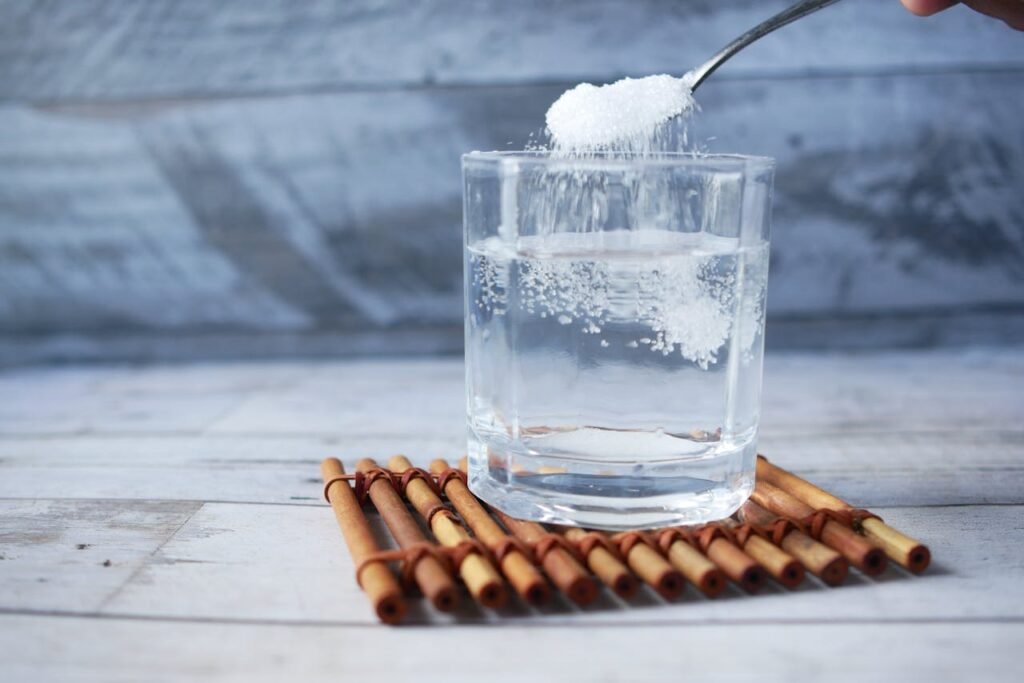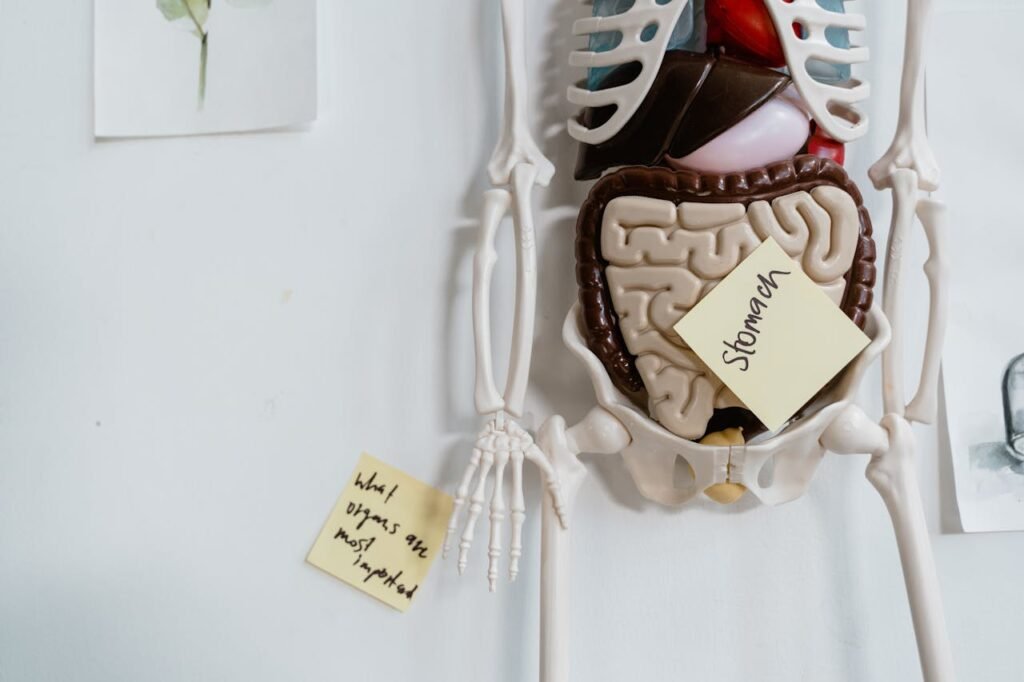Have you ever stirred sugar into a glass of water and watched it “disappear”? Or mixed salt into soup and wondered where it went? What about when you add chocolate powder to milk and it spreads through the whole cup? These are all examples of dissolving.
When something dissolves, it doesn’t vanish. Instead, it breaks apart into pieces so tiny that we can’t see them with our eyes anymore. Those tiny pieces spread evenly throughout the liquid, creating something we call a solution. Solutions are all around us—sweet lemonade, salty seawater, even the air we breathe is a kind of solution.
But why do some things dissolve easily while others don’t? Why does sugar mix so well with water, but oil floats on top? And what really happens to substances when they dissolve? In this article, we’ll explore the simple but fascinating science of solutions. By the end, you’ll see that dissolving is not a magic trick—it’s chemistry at work, happening in your kitchen, in your body, and across the world.
What Does It Mean to Dissolve?
When we say something dissolves, we mean that it breaks down into pieces so small that they mix evenly with a liquid. Those pieces become invisible to the eye, but they are still there. If you’ve ever stirred sugar into water, you’ve seen it happen. At first, you can see the sugar crystals. But after stirring, they “disappear.” The sugar hasn’t gone away—it has spread out so evenly that you can no longer see the individual grains.
A solution is what we call the mixture that forms when something dissolves. The liquid that does the dissolving is called the solvent, and the substance that dissolves is called the solute. For example, in sugar water, water is the solvent and sugar is the solute. Once combined, they make a solution that tastes sweet all the way through.
The Role of Particles
To really understand dissolving, we need to think about particles. Everything is made up of tiny particles called molecules. In a solid, like sugar or salt, the molecules are packed tightly together. In a liquid, like water, the molecules move around more freely.
When you put sugar into water, the water molecules surround the sugar molecules and pull them apart from the solid crystal. Piece by piece, the sugar breaks away and mixes with the water. Soon, the sugar molecules are spread evenly throughout the liquid. That’s why every sip of sugar water tastes just as sweet as the next.
Why Doesn’t Everything Dissolve?
You might wonder why sugar or salt dissolve so easily, but things like sand or oil do not. The answer has to do with how molecules interact. Some molecules are attracted to each other, like friends holding hands. Water molecules are very good at holding hands with sugar and salt molecules. But sand is made of particles that water cannot easily pull apart, so it sinks to the bottom instead. Oil is another case—its molecules prefer to stick together rather than mix with water, which is why oil floats on top instead of dissolving.
Everyday Examples of Solutions
Dissolving is not just something that happens in a glass of water. It happens everywhere. Seawater is a giant solution of salt dissolved in water. The air we breathe is a solution of gases—oxygen, nitrogen, carbon dioxide, and others—all mixed together. Even in your body, countless solutions keep you alive. Your blood, for example, is a solution that carries oxygen, nutrients, and other important substances all through your body.
Dissolving Is Not Disappearing
The most important thing to remember is that when something dissolves, it does not vanish. It just changes form. The sugar in your lemonade is still there—you can taste it. The salt in seawater is still there—you can feel it if you touch your lips to the waves. Dissolving is simply nature’s way of mixing substances so evenly that we can’t see the pieces anymore.
Why Do Some Substances Dissolve and Others Don’t?
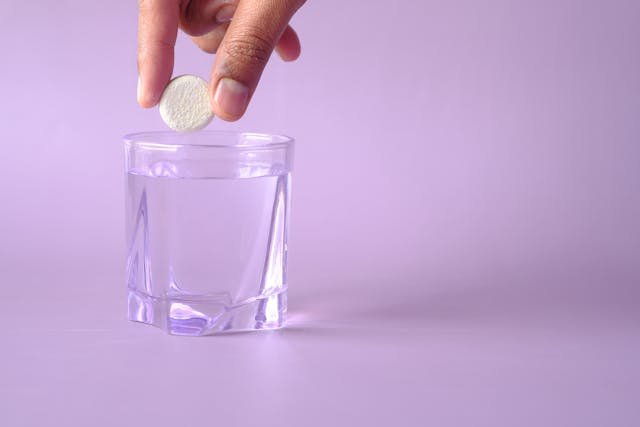
Not everything you put in water will dissolve. Sugar and salt mix in easily, but sand sinks to the bottom and oil floats on top. Why is that? The secret lies in how the particles of each substance behave and whether they “like” to mix with water.
Molecules and Friendships
Think of molecules as people at a party. Some people are friendly and love to meet new people. Others prefer to stay with their own group. Water molecules are very friendly—they like to surround and connect with other molecules, such as sugar or salt. When sugar or salt enters the water, the water molecules rush over, grab hold, and pull them apart into tiny pieces. That’s why these substances dissolve so well.
But molecules like those in sand or oil are different. Sand molecules are tightly packed and very hard for water to separate. Oil molecules prefer to stick with each other rather than mix with water. So instead of dissolving, they either sink, like sand, or float on top, like oil.
“Like Dissolves Like”
Scientists often explain dissolving with a simple phrase: “like dissolves like.” This means substances with similar types of molecules mix together more easily. Water is made of polar molecules, which means it has tiny positive and negative ends that attract other polar molecules. Sugar and salt are also polar, so they dissolve easily in water.
Oil, however, is made of nonpolar molecules. These don’t have the same charges, and water isn’t attracted to them. That’s why oil and water don’t mix, no matter how much you stir. It’s like trying to mix oil paint with water—it will always separate again.
Temperature Makes a Difference
Another reason some things dissolve better than others has to do with temperature. Hot water makes molecules move faster. When you stir sugar into hot tea, the water molecules are moving quickly and can pull apart the sugar crystals much faster than in cold water. That’s why sugar dissolves more slowly in iced tea than in hot tea.
Temperature also explains why some substances can dissolve more in hot water. For example, you can make syrup by dissolving large amounts of sugar in boiling water. The hot water can “hold” more sugar molecules than cold water can.
Pressure and Gases
Liquids don’t just dissolve solids—they can also dissolve gases. For example, the fizz in soda is carbon dioxide gas dissolved in water. This only happens because the soda is bottled under high pressure. When you open the bottle, the pressure is released, and the gas escapes as bubbles. Without the pressure, the gas cannot stay dissolved.
Why This Matters
Understanding why some substances dissolve and others don’t helps us explain everyday life. It’s why we add salt to boiling water when cooking pasta, why lemonade tastes different when stirred in hot or cold water, and why soda goes flat after being open for too long. Dissolving may seem like a small thing, but it controls so much of what we eat, drink, and even breathe.
Solutions in Everyday Life
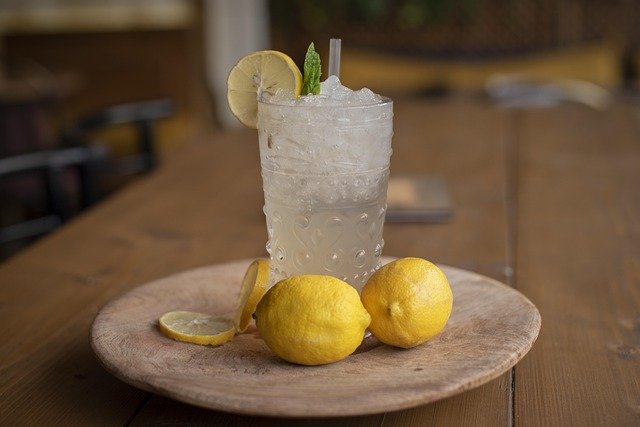
Solutions are not just something you learn about in science class. They are everywhere in daily life—on your plate, in your body, in the air you breathe, and even in the oceans. Understanding solutions helps us see the hidden science behind ordinary moments.
In Food and Drinks
One of the most common places you see dissolving is in the kitchen. When you make lemonade, sugar dissolves in water to sweeten the drink. When you sprinkle salt into soup, it dissolves evenly so every spoonful tastes the same. Even tea and coffee are examples of solutions. The flavors, colors, and nutrients in the leaves or beans dissolve in hot water, creating a new drink.
Cooking is full of chemistry. Think about syrup—it is simply sugar dissolved in hot water until the solution becomes thick and sweet. Sports drinks are also solutions; they contain water with salts and sugars dissolved in them to replace what the body loses during exercise. Without dissolving, our food and drinks would not taste or work the way they do.
In Medicine
Medicine often relies on solutions to work properly. When you take a liquid medicine, the active ingredient is dissolved in water or another liquid, making it easy for your body to absorb. Even tablets dissolve once they reach your stomach, breaking down into tiny pieces that your blood can carry through your body.
Salt solutions are also used in hospitals. Patients who need fluids are often given saline, which is just water with salt dissolved in it, similar to the balance found naturally in our bodies. This simple solution can be lifesaving.
In Cleaning
Cleaning products work because of dissolving. Soap dissolves grease and dirt so they can be washed away with water. Detergents dissolve stains on clothes and leave them fresh. Toothpaste contains chemicals that dissolve acids in your mouth, protecting your teeth from damage. Even glass cleaner is a solution that dissolves dirt and oils from windows, leaving them clear and shiny.
Every time you wash your hands or brush your teeth, you’re relying on the science of solutions to stay clean and healthy.
In Nature
The natural world is full of solutions. Seawater is one of the largest solutions on Earth, containing huge amounts of salt dissolved in water. Rainwater dissolves minerals from rocks as it flows, carrying them into rivers and streams. Even the air we breathe is a kind of solution, with gases like oxygen, nitrogen, and carbon dioxide mixed evenly together.
Solutions also play a role in weather. For example, water vapor dissolves in the air, forming humidity. When the air cannot hold any more, the water condenses into droplets, forming clouds and eventually rain.
In Our Bodies
Your body is a walking chemistry set, and many of its processes depend on solutions. Blood is a solution that carries oxygen, nutrients, and waste products around the body. Digestive juices are solutions that dissolve food so your body can absorb it. Even the fluids in your cells are solutions of water, salts, and other molecules, all carefully balanced to keep you alive and healthy.
Solutions are everywhere—quietly working behind the scenes to make food taste good, medicines heal, cleaning products work, and nature stay balanced. Once you start noticing them, you’ll realize that dissolving is one of the most important processes in the world.
What Affects How Fast Things Dissolve?
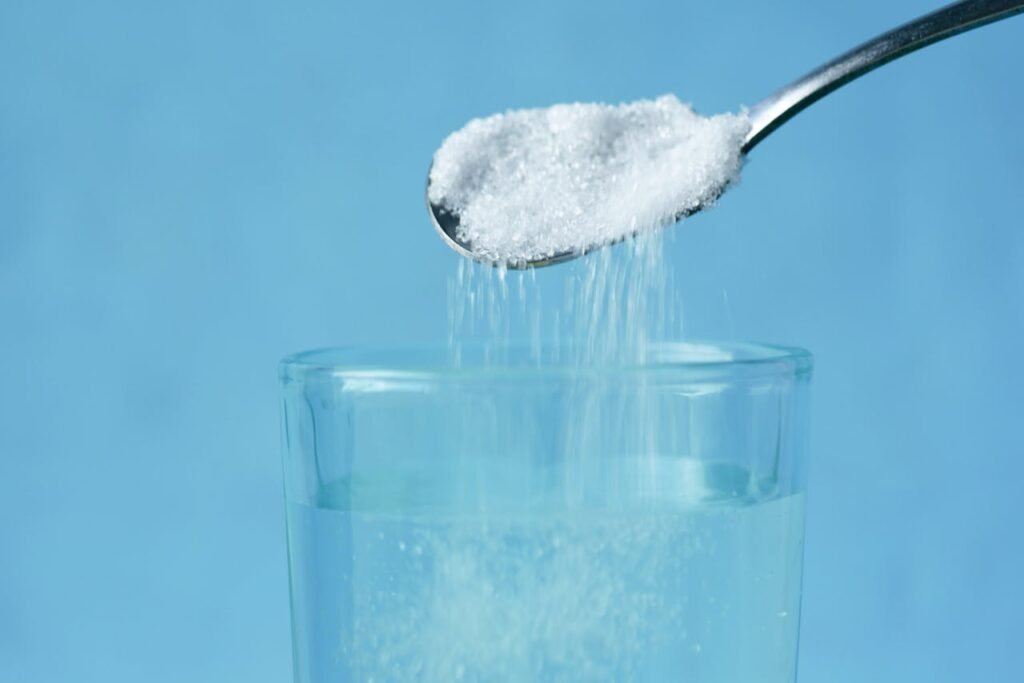
If you’ve ever stirred sugar into hot tea, you probably noticed it dissolved almost instantly. But if you’ve tried the same thing in a glass of cold lemonade, the sugar sits at the bottom and takes much longer to disappear. Why is that? Several factors affect how quickly substances dissolve, and all of them are simple to understand once you look closely.
Temperature
Temperature is one of the biggest factors. When water is hot, its molecules move much faster. They bump into the sugar or salt more often, pulling it apart more quickly. That’s why sugar dissolves almost instantly in hot tea but lingers in cold drinks.
This is also why recipes often tell you to dissolve sugar or salt in warm water before mixing it into something else—it ensures the solute spreads evenly and quickly.
Stirring
Movement helps too. When you stir a mixture, you push the water molecules around, allowing them to bump into the sugar or salt crystals more often. Stirring keeps the dissolved particles from gathering in one place and speeds up the process.
Without stirring, molecules still move, but more slowly. That’s why sugar will eventually dissolve in a glass of water left alone, but it might take hours compared to seconds when stirred.
Surface Area
The size of the solute pieces also makes a difference. Think about sugar cubes versus granulated sugar. A sugar cube takes much longer to dissolve because the water can only touch its surface. The smaller grains of sugar dissolve faster because more of their surface is exposed to the water at once.
This is why crushing or grinding substances makes them dissolve more quickly—it increases their surface area. For example, powdered drink mixes dissolve almost instantly because they are made of very fine particles.
Pressure (For Gases)
For gases dissolving in liquids, pressure plays an important role. Soda is a good example. Carbon dioxide gas is dissolved in the liquid under high pressure inside the bottle or can. As soon as you open it, the pressure is released, and the gas escapes as bubbles.
The higher the pressure, the more gas can dissolve. That’s why soda factories pump gas into bottles under pressure before sealing them.
Type of Solvent and Solute
Finally, the nature of the substances themselves matters. Remember the idea of “like dissolves like”? Substances with similar properties dissolve faster together. That’s why salt and sugar mix so easily with water, while oil doesn’t.
The strength of the attraction between molecules determines how easily and quickly dissolving happens. Strong attractions make dissolving slower; weaker ones make it faster.
Why Speed Matters
How fast something dissolves can make a big difference in everyday life. It affects how quickly medicine works in your body, how evenly flavors spread in cooking, and even how soft drinks keep their fizz. By controlling temperature, stirring, particle size, and pressure, we can manage dissolving to suit our needs.
The Science of Saturation: When a Solution Can’t Hold Any More

Imagine you’re making a cup of sweet tea. You add one spoon of sugar, and it dissolves. You add another, and it disappears too. You keep adding more, and the tea gets sweeter and sweeter. But eventually, you reach a point where no matter how much you stir, the sugar no longer dissolves. Instead, it sinks to the bottom.
That point is called saturation. It means the solution has reached its limit—there’s no more space for extra solute to dissolve in the solvent.
Why Does Saturation Happen?
At the particle level, dissolving happens because water molecules surround the solute particles (like sugar or salt) and pull them apart. But there’s only so much space for the water molecules to “hold onto” the solute. Once every water molecule is busy holding solute particles, the solution is saturated. Any extra sugar or salt you add will just sit at the bottom.
It’s like a crowded bus. At first, new passengers (solute particles) can get on easily. But once the bus (solvent) is full, there’s no more room. Anyone else has to wait outside.
Supersaturated Solutions
Interestingly, sometimes a solution can dissolve more than it normally should under special conditions. If you heat water, it can dissolve more sugar than cold water. If you then carefully cool the solution down without disturbing it, the extra sugar stays dissolved for a while. That’s called a supersaturated solution.
Supersaturated solutions are unstable, and the extra solute often comes out suddenly, forming crystals. Rock candy is a fun example—when you leave a stick in supersaturated sugar water, crystals slowly form on it, creating sweet candy.
Real-Life Examples of Saturation
Saturation is not just about sugar in tea. It happens in many parts of life.
- In the ocean, seawater is saturated with salt. That’s why adding more salt doesn’t change its taste much—it already holds as much as it can.
- In the air, humidity is an example of saturation. Air can only hold so much water vapor. When it’s saturated, clouds form, and eventually rain falls.
- In medicine, sometimes solutions are made at just the right concentration—strong enough to work, but not so strong that the solute crystallizes out.
Why It Matters
Understanding saturation is important because it sets limits. It tells us how sweet a drink can be, how salty the ocean is, and why rain falls from the sky. It also shows how scientists control solutions in food, medicine, and technology.
Saturation teaches us that even though dissolving looks invisible, there are real rules guiding how much and how fast it can happen.
Solutions in Nature and the Environment

Solutions are not only in kitchens and classrooms—they are built into the way the Earth works. Nature relies on dissolving to move nutrients, shape landscapes, and even control the weather. Once you start noticing, you’ll see that solutions are everywhere in the environment.
Oceans and Seas
The ocean is the largest solution on our planet. It is full of water with salts dissolved in it. That’s why seawater tastes salty if you accidentally get a drop on your lips. The salt comes from rocks on land. Rainwater dissolves minerals from those rocks and carries them into rivers, which eventually flow into the ocean. Over millions of years, this process has made oceans salty.
But it isn’t just salt. The ocean also holds dissolved gases like oxygen and carbon dioxide. Fish and other sea creatures rely on dissolved oxygen to breathe. Without it, life in the ocean would not survive.
Rain and Weather
Rain itself is part of the science of solutions. Water vapor dissolves in the air. When the air becomes saturated and can’t hold any more, water droplets form, creating clouds. Eventually, those droplets grow heavy enough to fall as rain.
Rainwater is also a natural solvent. As it falls, it dissolves small amounts of gases from the air, such as carbon dioxide. This makes rain slightly acidic, which helps it break down rocks over time. This slow dissolving process helps shape mountains, valleys, and soil.
Soil and Plants
Plants rely on dissolving, too. Soil holds minerals like nitrogen, potassium, and phosphorus. When it rains, water dissolves these nutrients, making them available for plant roots to absorb. Without this process, plants would not get the food they need to grow.
This is why farmers add fertilizer to soil. Fertilizers contain nutrients that dissolve easily in water, ensuring plants can take them in. It’s another example of how understanding solutions helps us grow food.
Air and Atmosphere
Even the air around us is a kind of solution. It is made up of gases—mainly nitrogen and oxygen—mixed together evenly. Carbon dioxide and other gases are also dissolved in the air in smaller amounts. This mixture is what we breathe every day, and without it, life would not exist.
When too much of one gas builds up, however, the balance can be disturbed. For example, too much carbon dioxide in the atmosphere contributes to climate change. This shows how delicate the balance of natural solutions can be.
Rivers and Caves
Rivers often carry dissolved minerals. When water rich in calcium carbonate drips inside caves, it slowly leaves behind crystals as the solution becomes saturated. Over time, this creates stalactites and stalagmites—the beautiful stone formations we see in caves.
This is another example of how simple dissolving, happening slowly over thousands of years, can shape the world in amazing ways.
Solutions are not just about science experiments or drinks—they are the hidden processes that run the natural world. They keep oceans alive, plants growing, rain falling, and even landscapes forming. Without dissolving, Earth would be a very different place.
How Debsie Helps Kids Understand Solutions

At Debsie, we know that kids learn science best when it feels real, fun, and full of discovery. The idea of “things dissolving” can sound like a small topic at first, but it is actually one of the most powerful ways to explain chemistry and the natural world. That’s why our teachers turn this everyday process into exciting lessons that stick with children for life.
Turning Science Into Simple Stories
Instead of overwhelming kids with big words like “solvent” and “solute,” Debsie teachers use stories and images children can picture. Sugar dissolving in tea becomes a story of tiny sugar particles being welcomed and carried away by water molecules. Oil and water not mixing becomes a story of two groups of “friends” who like to stay apart. These simple stories help children understand big scientific ideas without fear or confusion.
Hands-On, Fun Experiments
Debsie lessons don’t stop at explanations—we encourage kids to try safe experiments at home. Children might stir sugar into cold and hot water to see the difference, test how much salt water can hold before it becomes saturated, or explore why oil floats instead of dissolving. By doing the experiment themselves, children see the science with their own eyes. This makes learning not just about memory, but about experience.
Gamified Challenges
Learning with Debsie feels like play. Kids take part in challenges where they predict what will dissolve, earn points for correct observations, and unlock levels as they explore new ideas. These gamified lessons turn curiosity into motivation. Instead of just memorizing, children enjoy the process of discovery.
Expert Teachers, Simple Language
Our partner teachers are subject experts, but more importantly, they know how to explain difficult ideas in clear, child-friendly language. They use everyday examples—like salty soup, fizzy soda, or sweet lemonade—so that every child can connect classroom science with real life. This builds confidence and curiosity, even in kids who once felt science was “too hard.”
Building Life Skills Through Science
At Debsie, learning about dissolving is not just about chemistry. It’s also about building life skills. Children learn to observe carefully, think critically, and solve problems. When they predict whether something will dissolve and test it out, they are practicing focus, patience, and smart thinking—the same skills that help them succeed in school and in life.
Debsie doesn’t just teach science. We make children feel the wonder of science in their daily lives. With us, dissolving sugar in tea isn’t just a simple act—it’s the doorway into the hidden rules of the world.
Conclusion: The Hidden Power of Solutions
Dissolving may look simple—like sugar disappearing in water—but it is one of the most important processes in science and in life. It explains why oceans are salty, why rain nourishes plants, why soda fizzes, and even how our own blood carries oxygen and nutrients through our bodies. Solutions are the hidden systems that keep the world alive and balanced.
By noticing dissolving in everyday life—whether in cooking, cleaning, or nature—children begin to see that science is not far away. It is happening in their own homes, in their classrooms, and in their very bodies. Understanding solutions is not only about chemistry; it is about understanding how life works.
At Debsie, we turn this hidden science into exciting adventures. Through stories, experiments, and playful challenges, our teachers show kids that learning about solutions is fun, easy, and meaningful. With every lesson, children not only gain knowledge but also build confidence, curiosity, and problem-solving skills they can carry into every part of life.
👉 Book a free trial class today
👉 Explore Debsie’s full range of courses and spark your child’s love for science and discovery.
Because when kids learn that even something as simple as sugar in tea is a doorway into the mysteries of the universe, they don’t just study science—they fall in love with it.
Read Next:
